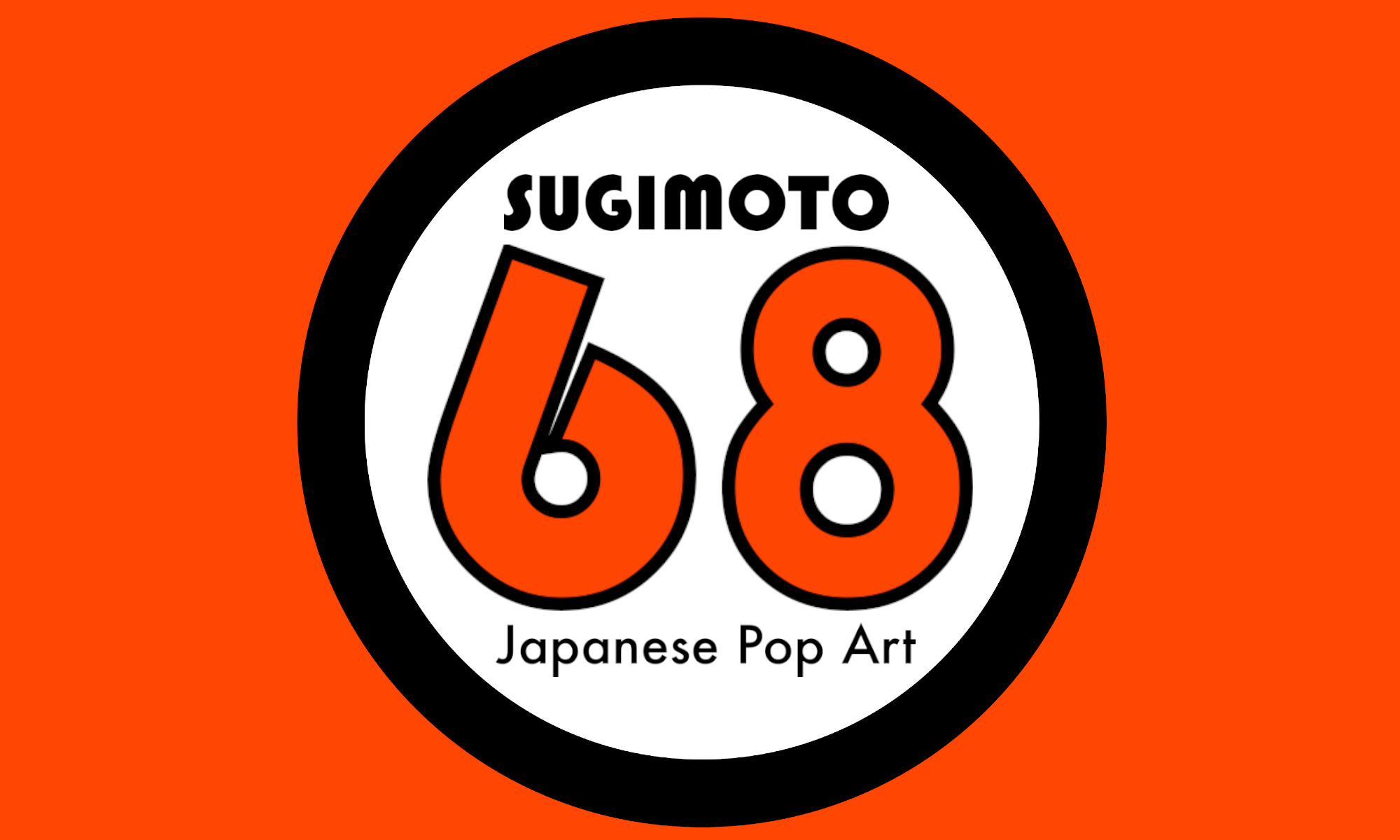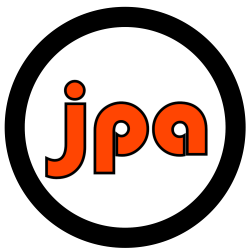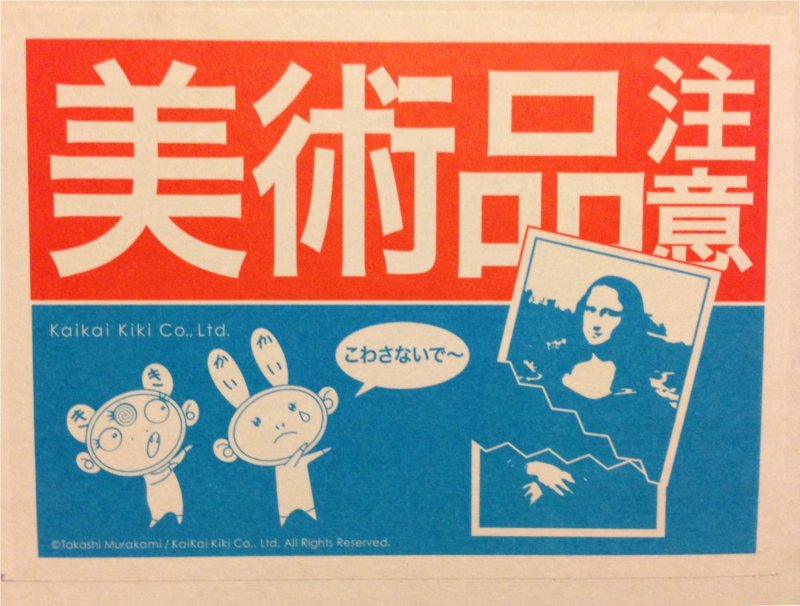Now Murakami COAs are popping up all over! I just discovered that the MOCA, of all places, includes a Kaikai Kiki COA with your Murakami print. Contradicting the claim in ‘What they don’t tell you about COAs’, a COA for a Murakami offset print does exist––at least from the MOCA. In any event, prints purchased directly from Kaikai Kiki do not come with COAs. This entry will describe documentation that accompanies a print from Murakami’s Kaikai Kiki factory.
By the way, you can see the MOCA COA here, and an example of a COA for the recently released Jellyfish Eyes Murakami Luxor limited edition figurine here. The MOCA COA one is black and white, unsigned, and in English. I would still prefer to have the MOCA receipt along with their COA.
3 documents serve as provenance for a Kaikai Kiki print
- The order form
- The invoice
- The shipping labels
- The box and original packing (3 documents, +1 item!)
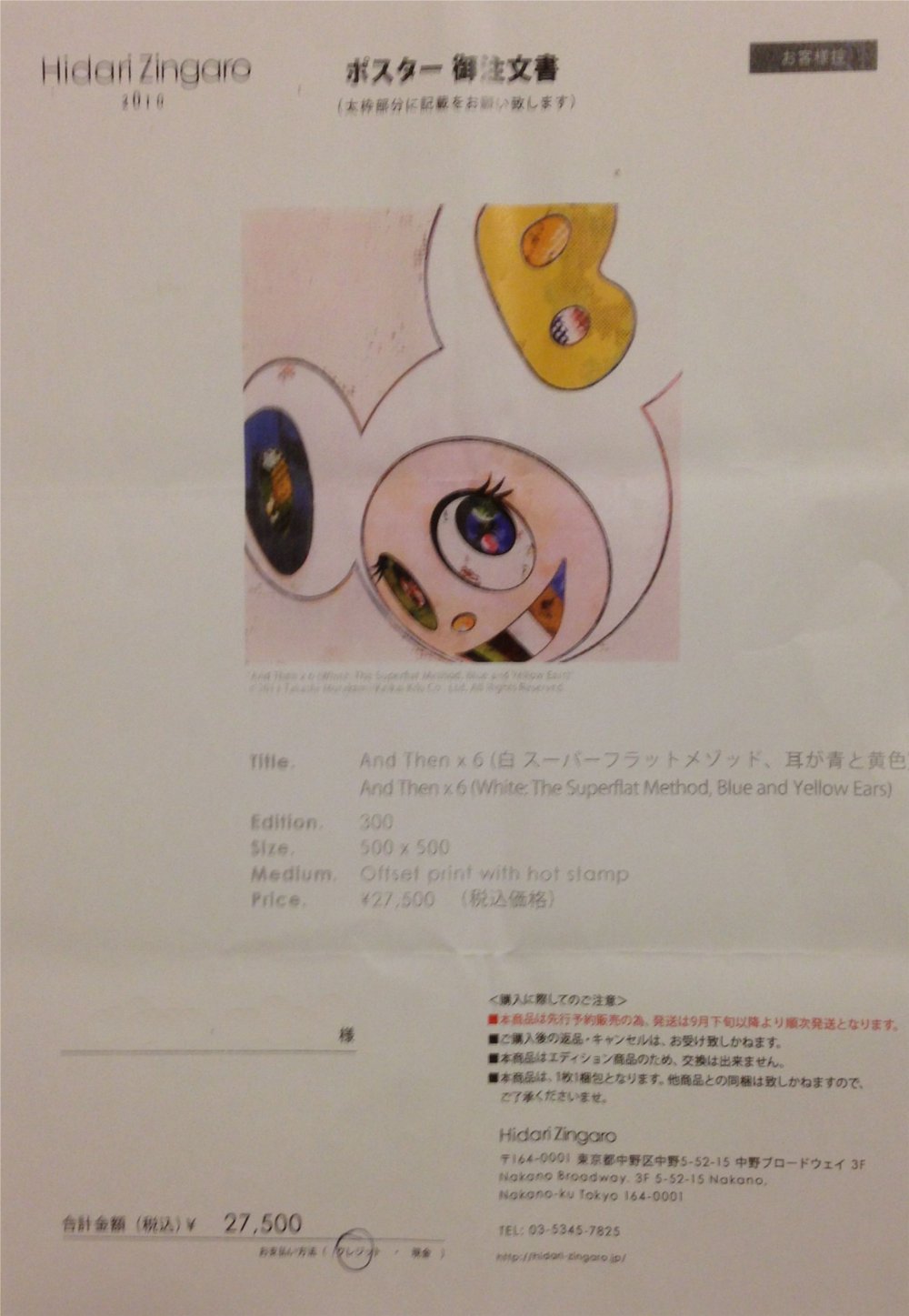
1. The order form is received from Murakami’s Hidari Zingaro at the time of purchase. You fill out two forms: one with your delivery information that the shop keeps and the other one pictured to the left as a receipt. You write your name on the order form. (The name on the order form on the left has been edited out.) For those who pay in cash, no other receipt is given unless requested. Any additional receipt is generic and gives the total price paid for all items.
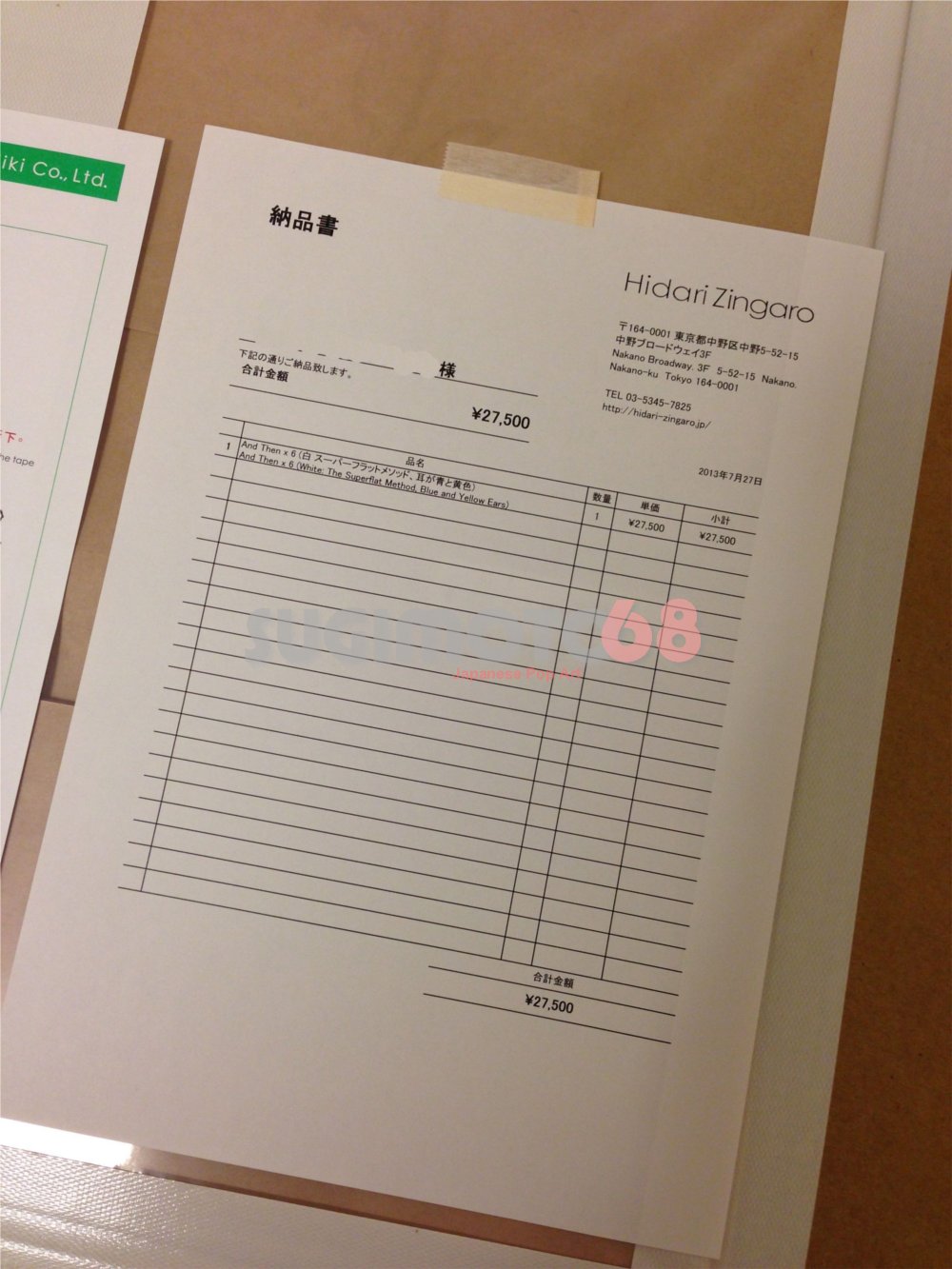
2. The invoice arrives with your Murakami print inside of the box. It gives the name of the purchaser and lists the print purchased. (The name on the invoice pictured has been edited out.) In the past Kaikai Kiki would ship multiple prints together, so any invoice before 2010 may list several prints. Since 2010 Kaikai Kiki has only shipped one print per box, therefore such invoices will never have more than one item listed. Sellers who have purchased prints before 2010 will rarely give up an invoice listing many prints, so count yourself in the lucky few if you ever receive a pre-2010 Kaikai Kiki invoice!
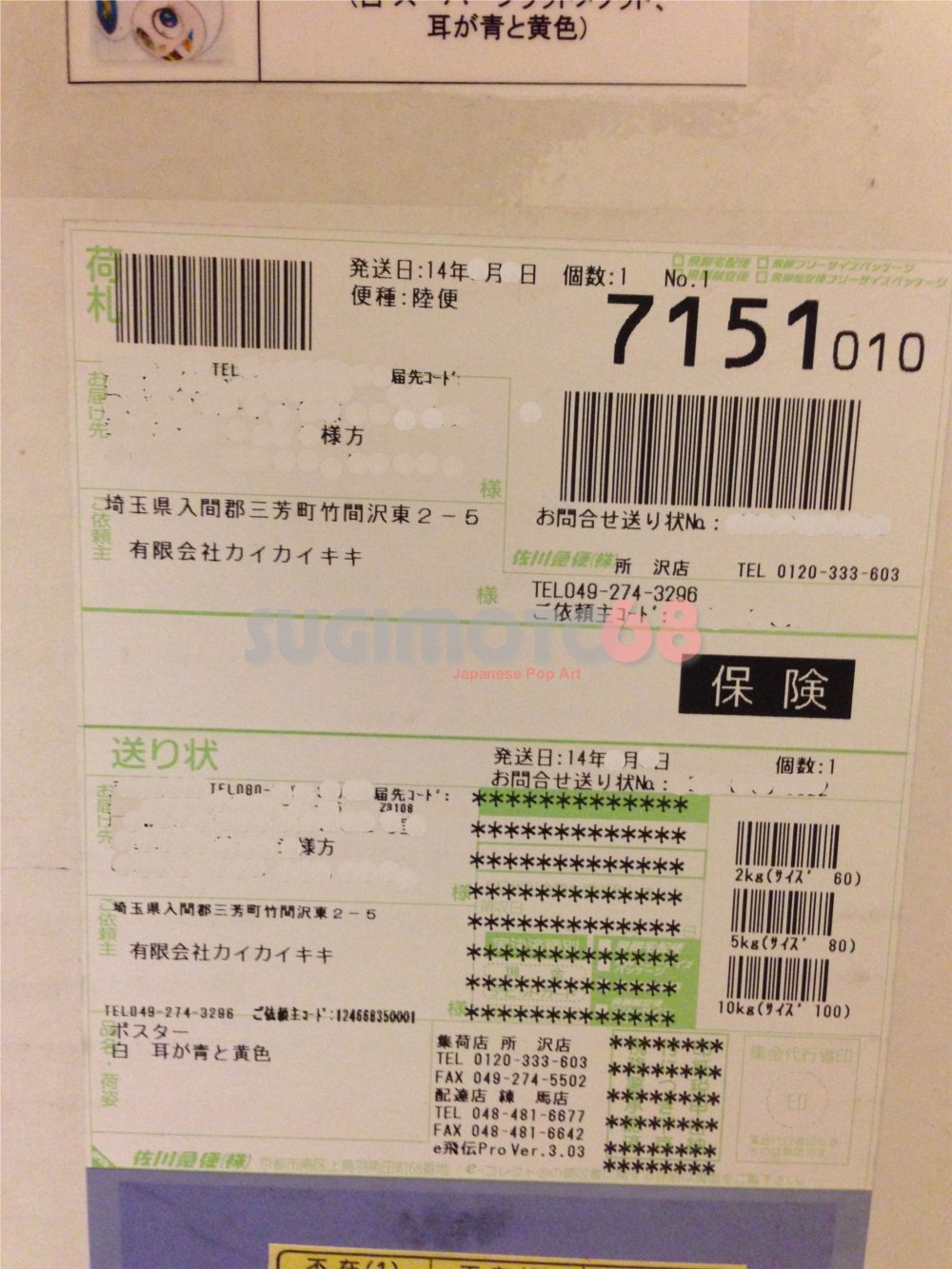
3. The shipping labels serve as the strongest proof of provenance because they show where and when Kaikai originally shipped the print––a canonical representation of provenance. Upon receiving your art, likely very late, you can observe two labels attached to the outside of the box. They show the name of the person who ordered the print and the address shipped to. Kaikai Kiki’s return address appears in Japanese. The top label contains shipping information, the lower label insurance information for the shipment. While an unscrupulous dealer could readily duplicate the first two documents, they would find it difficult to recreate the shipping labels in 100% perfect detail.
4. The box and original packaging also send a very strong signal for authenticity. Kaikai Kiki ships out the art in virtually bullet-proof boxes. The layers from closest to the print to the most outer layer consist of: glassine wrap, brown paper wrap, heavy plastic wrap affixed to heavy cardboard, two styrofoam layers, an inner box and an outer box. When you open the box up and finally expose the print beneath the styrofoam padding, you finally reveal the print––secured to a heavy board by 5 long bands of really sticky tape. If that tape remains untouched, you know you can proudly declare yourself the owner of a pristine, unadulterated Murakami print!
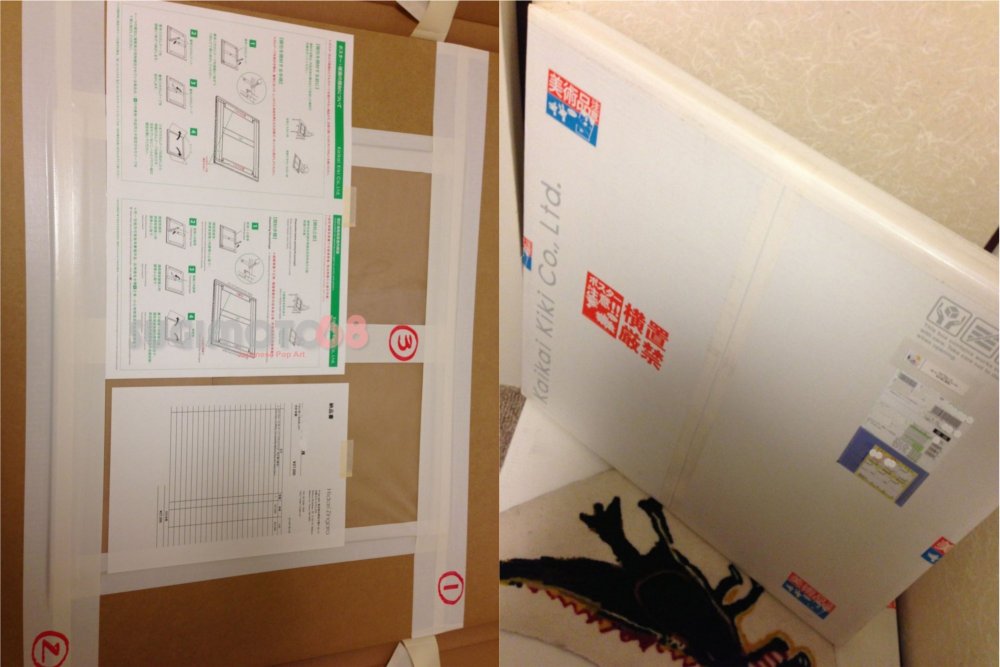
Voila!
If your print meets all of these conditions and the buyer’s name is the same on all 3 primary documents, then the preponderance of evidence very strongly suggests that the print in your possession is authentic.
The Downside
Having said all of that, one can never have 100% certainty. None of the documentation identifies the number of the print in the box, so in principle no bullet-proof evidence can exist. One must rely on the preponderance of evidence to demonstrate authenticity. Another issue is that many sellers loathe giving out their private information via the documentation, so oftentimes you will not have access to all 4 pieces of evidence above. Most likely you will receive the print packaged in the box along with the invoice. Good evidence, but far from perfect.
The Upside
The reality is that a person would find it far more profitable to sell original Murakami prints than to produce counterfeit ones. Murakami offsets exist in abundance these days and Kaikai Kiki charges a nominal price for its art. My First Art Collection is the name of the offset series of Murakami’s prints, so represents the idea of affordable art. Even after passing through 3rd party sellers, a recent print can still sell for a reasonable price if purchased near the release date. Additionally, the difficulty of even Murakami’s printers adhering to his exact standards, means that any counterfeit will unlikely be identical to an original. All of the printing happens in Japan, so no offshore company with a secret stash will release near-duplicates.
All in all, a Murakami is usually a safe purchase whether with or without a COA;)
